|
|
|
|
|
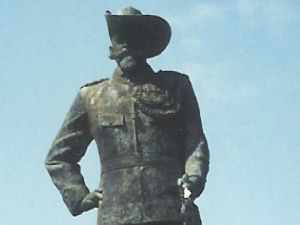 |
|
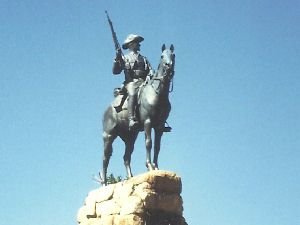 |
|
The memorial in Windhoek to Curt von Francois who was
the founder and first commander of the Schutztruppe for South West
Africa. He also founded the town of Windhoek and was responsible for
building the Alte Feste. |
|
The memorial outside the Alte Feste in Windhoek to the fallen
Germans in the Herero and Hottentot rebellions. The statue is of a
mounted Schutztruppe Reiter wearing the traditional Südwester hat.
|
|
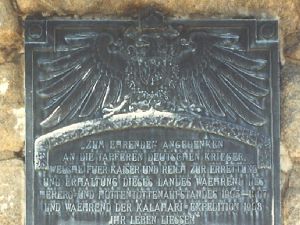 |
|
 |
|
The plaque on the memorial in Windhoek. It
lists the deaths of 100 officers, 254 NCOs and 1,180 other ranks from
the Schutztruppe; 7 officers, 13 NCOs and 72 sailors from the imperial
German navy and 119 men, 4 women and one child among the German
civilian casualties between 1903 and 1908. No mention is made of
native losses which were in the tens of thousands. |
|
The "Alte Feste" (Old Fort),
the former Schutztruppe headquarters and fort in Windhoek built by
Curt von Francois in the 1880's. |
|
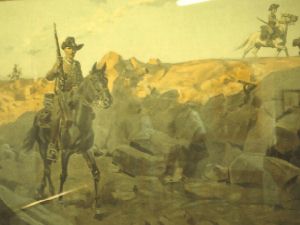 |
|
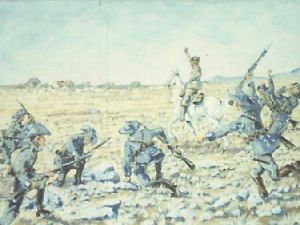 |
|
A painting of a Schutztruppe Reiter by
Carl Becker in the Alte Feste. Carl Becker painted many scenes
of the Schutztruppe in South West Africa. Most have appeared in
various books but this one has not been seen in print before. |
|
A mural in the Alte
Feste based on paintings by Carl Becker showing Victor Franke's forced march to relieve Windhoek and
Okahandja for which he was awarded the Pour le Mérite. |
|
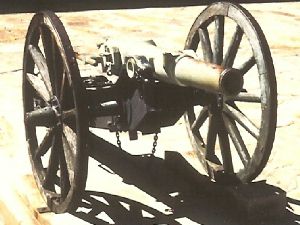 |
|
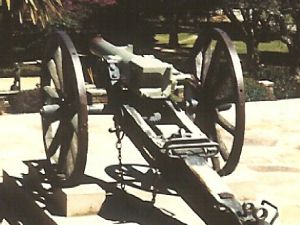 |
|
A German mountain gun on display in
front of the Namibian Parliament building, the "Tintenpalast" in
Windhoek. |
|
Another view of the mountain gun from
Windhoek. The breech markings showed it have been made at the Spandau
armaments factory in Berlin. |
|
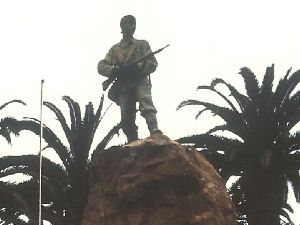 |
|
 |
|
The Marine Denkmal
(naval memorial) in
Swakopmund commemorating the fallen naval personnel in the Herero and
Hottentot rebellions. The figure shown is that of a Seesoldat from the
I. or II. Seebataillone that were sent to reinforce the Schutztruppe. |
|
Another view of the Seesoldat on top of
the Marine Denkmal. |
|
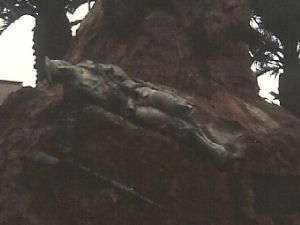 |
|
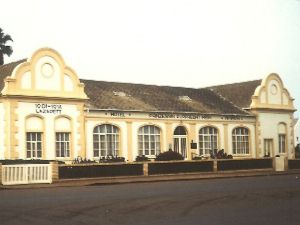 |
|
A figure lower down on the Marine
Denkmal memorial showing a fallen sailor. |
|
The former Schutztruppe hospital in
Swakopmund now a hotel. |
|
 |
|
 |
|
The Schutztruppe barracks
in Swakopmund, now a public school. |
|
Another view of the former Schutztruppe
barracks in Swakopmund. |
|
 |
|
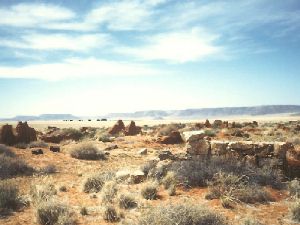 |
|
The ruins of the Aus POW camp for the
interned Germans in WWI. The camp was made by the prisoners
themselves from mud brick. |
|
Another view of the Aus POW camp ruins. |
|
 |
|
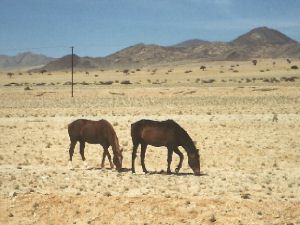 |
|
The memorial at the Aus POW camp. This
monument has since been tragically vandalised (see
link here). |
|
Wild horses grazing at Aus. These horses
are not native to Namibia and are in fact descendants of the
Schutztruppe's mounts. |
|
 |
|
 |
|
The battlefield at Waterberg where the
Hereros were defeated in August 1904, seen from the plateau looking
down. |
|
Waterberg looking up at the plateau. |
|
 |
|
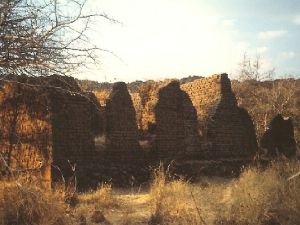 |
|
The memorial to the Schutztruppe at
Waterberg. |
|
The ruins of the police barracks at
Waterberg that were burned down in the opening days of the Herero
uprising in 1904. |
|
 |
|
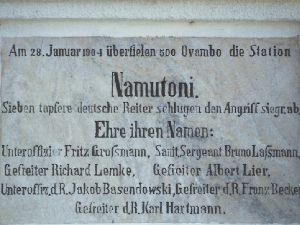 |
|
Fort Namutoni in Etosha that
was attacked by about 500 Ovambos on the 28th January 1904 at the outbreak of the Herero
War and defended by only seven Schutztruppen. The original fort
was destroyed, this is a newer reconstruction and is now a hotel. |
|
The plaque at Fort Namutoni with the names
of the seven Schutztruppe defenders. |
|
 |
|
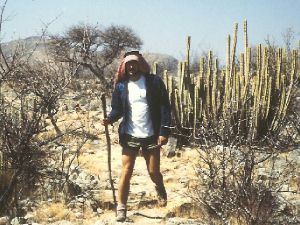 |
|
The battlefield at Naukluft where Theodor Leutwein fought against the Witboois
in 1894. |
|
Greg Gerardi trekking through the rough
terrain at Naukluft. |
|
|
|
|